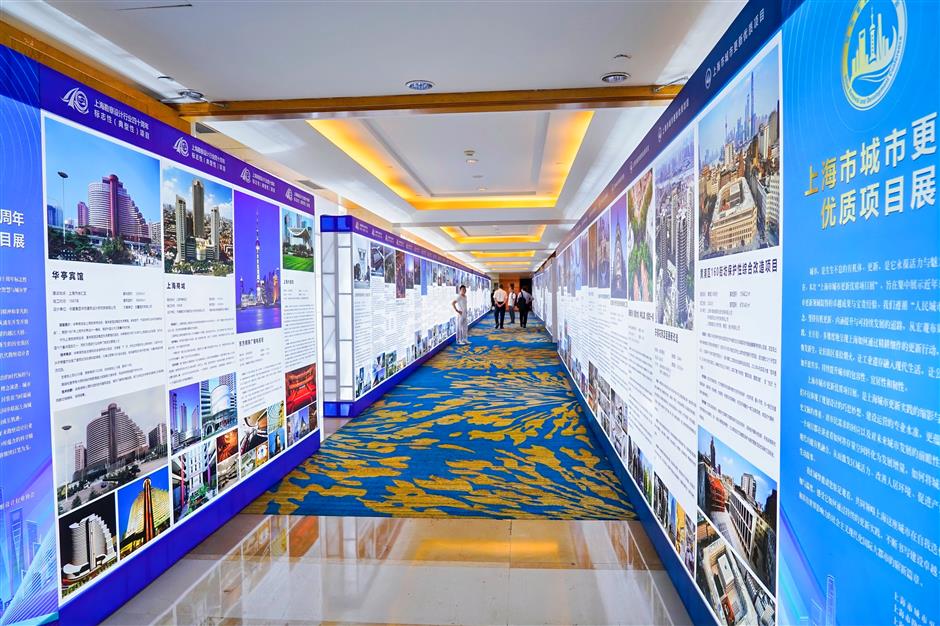Government News
Shanghai unveils outstanding urban renewal projects, seeks balance with cultural memory 2025-09-25

Shanghai unveiled 42 outstanding urban renewal projects at its first Urban Renewal Development Conference on Wednesday, signaling the city's push to combine cultural preservation with sustainable growth.
The projects cover five areas: public space upgrades, green landscapes, heritage protection, community facilities, and water environment management.
Examples include the renovation of Zhangyuan, Xujiahui Sports Park, the Columbia Circle, the former city government building near the Bund and the Wuyi Road community renewal.
Officials said these projects are intended to turn existing urban spaces into new growth opportunities while improving living conditions and preserving cultural memory.
Wan Yong, a senior researcher at the Shanghai Academy of Social Sciences and head of the Shanghai Urban Memory Research Institute, said future urban renewal approach should follow four principles: emotional connection, differentiation, order and organic integration.
He explained that renewal is not only about improving housing and infrastructure but also about driving economic growth.
"Outdated industrial and commercial spaces can be upgraded to raise efficiency and attract new businesses," Wan said.
He noted that renewal projects can lift property values and attract investment. But he also warned of the risk of gentrification. He highlighted that the "smoke-and-fire life," a Chinese phrase for street-level vitality, should not be lost.
"Some of it will change with time, but public spaces and cultural heritage can help keep that spirit alive," he told Shanghai Daily.
National engineering master Wang Xiao'an, chief architect at the East China Architectural Design and Research Institute, stressed the importance of protecting the city's street patterns.
"Urban memory is not just in one building. It is in the scale and rhythm of the streets," he said. "If you keep one historic house but surround it with towers, the memory is lost."
Wang noted that Tianzifang, a former residential alley-turned-creative hub where many residents still live upstairs, represents an ideal model of retaining memory and preserving history.
Several projects highlight how technology and craftsmanship work together in Shanghai's renewal drive. At Zhangyuan, for instance, robots were used to move historic buildings to preserve the narrow alleyways.
Other projects relied on traditional skills. At the "most beautiful corner" on Nanchang Road, craftsmen reproduced century-old glazed tiles using ancient techniques. On Wuyi Road, builders restored textures with stone-washing and hand-applied finishes, skills that are rare today.
Both Wan and Wang said policy and finance remain major hurdles.
Wan noted that fiscal pressure limits government spending, while private investors are cautious. He suggested mixed funding, with government, developers, residents, and financial institutions sharing costs.
Wang said regulations should give developers more flexibility to add practical, community-friendly functions to historic buildings, such as affordable dining and local services, instead of only exhibition halls or luxury stores.
"Urban renewal must bring real benefits to residents," Wang said. "If the function is wrong, the renewal fails."
Source: Shanghai Daily
Application Status
| 04-16 | 21315227 | Processing |
| 03-12 | 21315226 | Processing |
| 09-26 | 21315225 | Processing |
Inquiry Status
| 02-29 | 02131558 | Received |
| 03-06 | 02131557 | Received |
| 11-14 | 02131556 | Received |
FAQ
Q: Q: Is there a place where I can get...
A: A: Log on to http://touch.shio.gov....
A: A: Log on to http://touch.shio.gov....
Q: Q: What is the easiest way to set u...
A: A: 1. Log on to http://touch.shio.g...
A: A: 1. Log on to http://touch.shio.g...
Q: Where can I get an English map of S...
A: English maps of Shanghai are availa...
A: English maps of Shanghai are availa...

